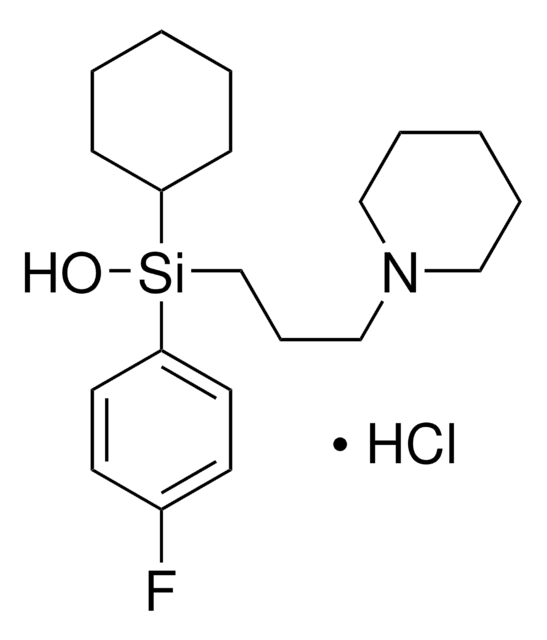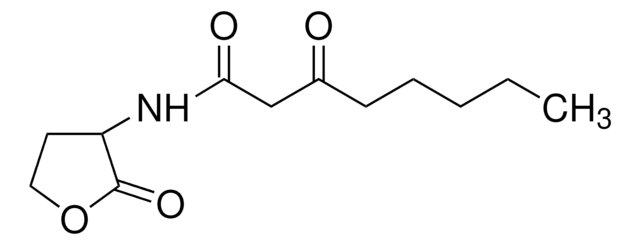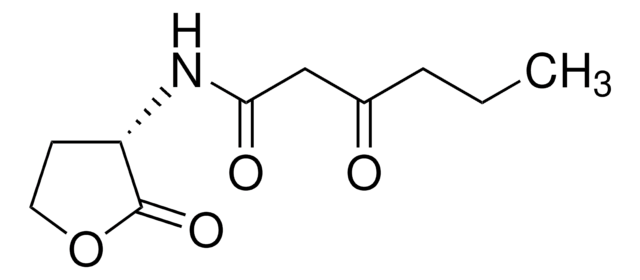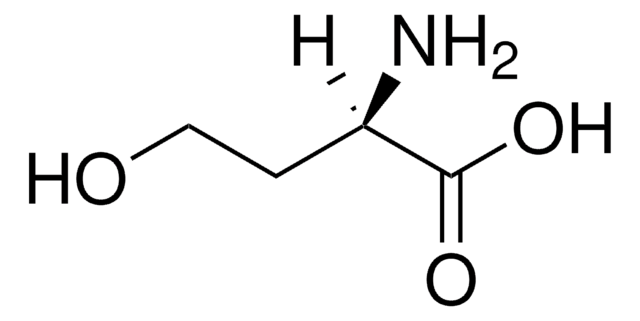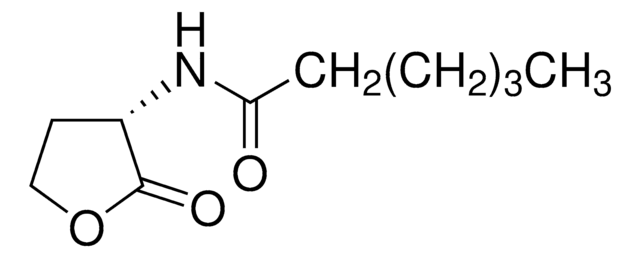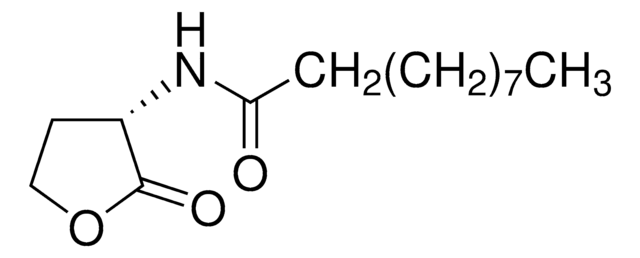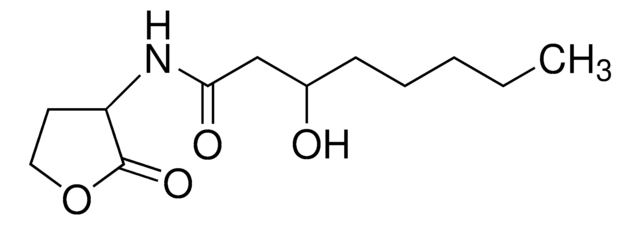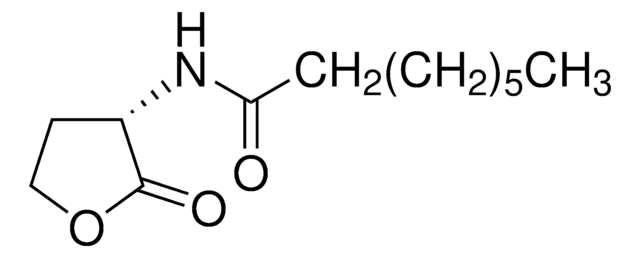Wichtige Dokumente
K3255
N-(β-Ketocaproyl)-DL-Homoserinlacton
analytical standard
Synonym(e):
N-(3-Oxohexanoyl)-DL-homoserin-lacton
About This Item
Empfohlene Produkte
Qualität
analytical standard
Qualitätsniveau
Methode(n)
HPLC: suitable
gas chromatography (GC): suitable
Eignung
suitable for manufacturing use
Anwendung(en)
forensics and toxicology
pharmaceutical (small molecule)
veterinary
Format
neat
Lagertemp.
−20°C
SMILES String
CCCC(=O)CC(=O)NC1CCOC1=O
InChI
1S/C10H15NO4/c1-2-3-7(12)6-9(13)11-8-4-5-15-10(8)14/h8H,2-6H2,1H3,(H,11,13)
InChIKey
YRYOXRMDHALAFL-UHFFFAOYSA-N
Anwendung
Lagerklassenschlüssel
11 - Combustible Solids
WGK
WGK 3
Flammpunkt (°F)
Not applicable
Flammpunkt (°C)
Not applicable
Persönliche Schutzausrüstung
Eyeshields, Gloves, type N95 (US)
Hier finden Sie alle aktuellen Versionen:
Besitzen Sie dieses Produkt bereits?
In der Dokumentenbibliothek finden Sie die Dokumentation zu den Produkten, die Sie kürzlich erworben haben.
Kunden haben sich ebenfalls angesehen
Unser Team von Wissenschaftlern verfügt über Erfahrung in allen Forschungsbereichen einschließlich Life Science, Materialwissenschaften, chemischer Synthese, Chromatographie, Analytik und vielen mehr..
Setzen Sie sich mit dem technischen Dienst in Verbindung.